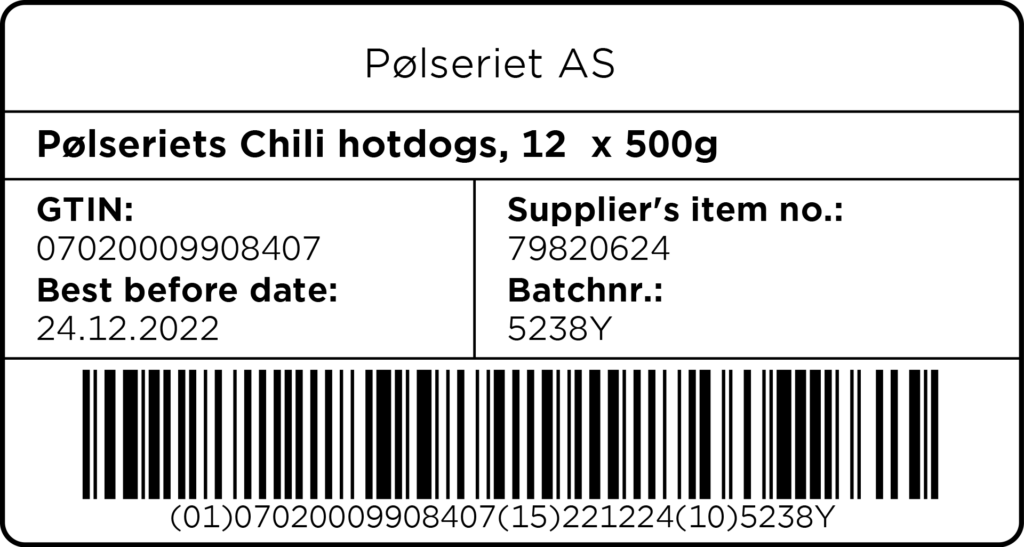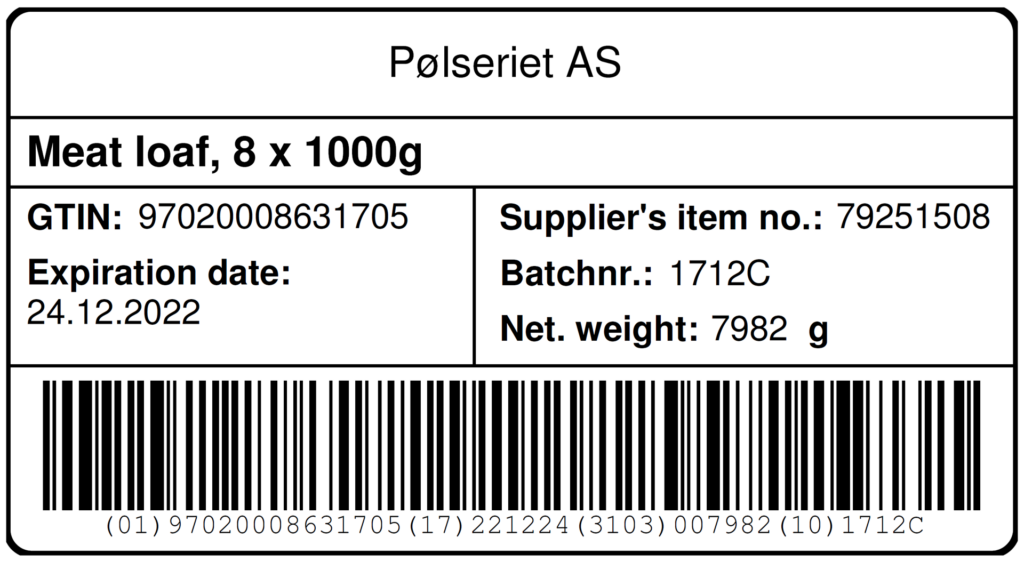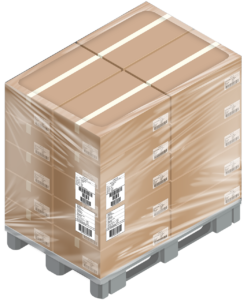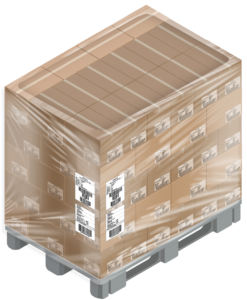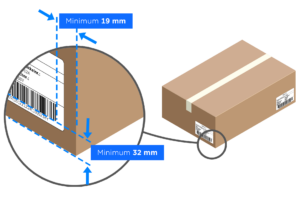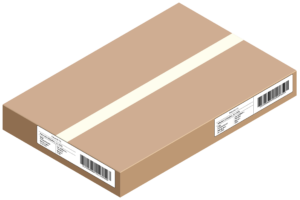2.2 Producing
This sub process describes the requirements, recommendations and guidelines STAND has, which may be relevant in production of a product to be traded in the grocery industry.
The process includes producing the product (Consumer Unit), packing it to a sales unit, usually a Stock Keeping Unit (SKU), fully packaged and labelled.
The areas described are:
- Total shelf life of the product
- Possible use of dynamic shelf life
- Traceability requirements for raw materials, input factors and finished products
- Labelling of traceability information on Consumer Unit (CU) and Stock Keeping Unit (SKU)
- 2D-labelling on Consumer Unit (CU)
- Labels on Stock Keeping Units (SKU)
- Content, and which information that should be in the bar code on the label
- Placement
- Requirements when using GS1-128
2.2.3 Guideline for labelling 2D barcodes on Consumer Units
Background
The need for information both in trade and to the consumer is constantly increasing. Today’s solution using the EAN-13 barcode does not provide opportunities for additional machine-readable information. The need for more information has led to products that have more than one bar code applied to Consumer Units, which creates challenges both at the checkout point (POS) and in the value chain. Often this is a QR code with a link to a website where the consumer can find more information.
In parallel with the need for more communication with consumers, a need is emerging at the retail level to gain more control over the traceability and expiry date of the products, to ensure safe food and reduce food waste. This is happening in most countries in the world. In Norway, GS1 Norway, together with Matvett, established a working group consisting of representatives from brand suppliers, grocery chains, system suppliers and other stakeholders to discuss these issues. These guidelines are a result of this work and have now been included as part of STAND’s framework for the Norwegian grocery industry.
Purpose of the use of 2D barcodes in Norwegian grocery
Although 2D barcodes are not the only solution to the challenges, this is the data carrier of the future, where the need for information is greater than just identifying a product with GTIN. 2D barcodes take up less space, can contain more information about the product, are a tool for reducing food waste and increase food security, are more flexible, and can be read by mobile phones. This provides an opportunity for increased consumer contact. In addition, 2D barcodes can solve all needs for information exchange throughout the supply chain, including being able to link to websites.
Different types of 2D barcodes
There are many different 2D barcodes, but only some of them can be used in connection with the GS1 standards, which are the standards used by the Norwegian grocery industry. The different 2D barcodes are also used for different purposes. This is regulated in GS1’s regulations, General Specifications. The difference between the different 2D barcodes helps to determine what they can be used for.
QR Code
The QR Code barcode is in the GS1 system defined to be used only with GS1 Digital Link URI syntax. In practice, this means that this should only be used for communication with the consumer via a URL that links to a website with more information that the consumer can read with his mobile phone. QR Code has grown to become the preferred barcode for consumer communication and most mobile phones today are able to read this with the built-in camera app in the phone. This means that the threshold for reading QR Code is low among consumers, and it is less need for training and communication to put functionality related to QR Code into production. Here you can find more information about QR codes.

GS1 Datamatrix
GS1 Datamatrix is a variant of Datamatrix that uses GS1 Element String syntax. This is the use of AI (Application Identifier) structure. This is a way of structuring the information in the barcode so that everyone who reads the barcode understands the content in the same way regardless of the order in which the information is printed and how much information is in the barcode. According to GS1 General Specifications, GS1 Datamatrix is only permitted for use on Consumer units with variable measure and prescription medicines. However, it is permitted to use it in limited pilots, for test purposes and in closed value chains under controlled conditions. The advantage of GS1 Datamatrix is that it has high compression and error correction. It can be printed both square and rectangular so that it can fit where there is not enough height, but enough width to get the information needed without compromising on size and thus readability. However, the rectangular version has a limit on the amount of data that can be used. GS1 Datamatrix is the only permitted barcode on prescription drugs. Here you can find more information about GS1 Datamatrix.

Content in barcode
A minimum requirement for information attributes has been defined for POS purposes.
This is:
- GTIN
- Best before date or Expiry date
- Batch/lot nr.
- Weight (for variable measure products).
It is possible to use other Application Identifiers for internal and/or external needs, but this is then up to each individual actor to use.
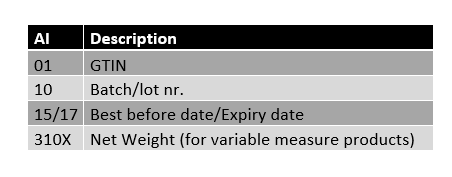
Innhold
- 2.2.1 Guidelines and routines for tracking, recall and withdrawal
- 2.2.2 Requirements for tracking information and labeling
- 2.2.3 Guideline for labelling 2D barcodes on Consumer Units
- 2.2.4 Allocation of total shelf life on a product
- 2.2.5 Determine total shelf life of a product and requirements for labelling this
- 2.2.6 Evaluate the use of dynamic shelf life
- 2.2.7 Purpose of labelling of Stock Keeping Unit (SKU) and Distribution Unit (DU)
- 2.2.8 Guidelines for labelling of Stock Keeping Units (SKU)
- 2.2.9 Bar code requirements for labelling with GS1-128 on Distribution Units (DU)
